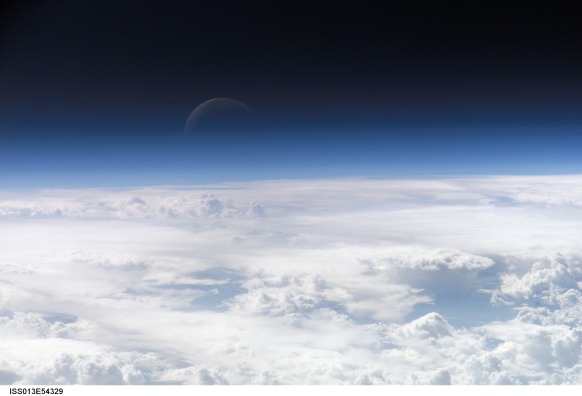A Hampton University professor and his colleagues are chronicling Earth’s efforts to keep cool in the face of global warming.

You and I have options for keeping cool on a hot summer day. For instance, we can find a spot in the shade, take a dip in a pool, or perhaps turn on a fan. Our planet, however, doesn’t enjoy the same luxury. It has, essentially, one way to cool itself, and that’s to radiate heat into outer space in the form of light. The strategy’s effectiveness depends in large part on how hot the Sun burns, how strong the solar winds blow, and other whims of space weather. As a result, our planet’s ability to stave off global warming varies from day to day and from year to year.
Now Hampton University’s James Russell and collaborators at NASA’s Langley Research Center and GATS, an aerospace company in Newport News, Virginia, have come up with a formula for determining how efficiently the Earth cools itself on any given day. Think of it as a heat or wind-chill index—but for planets instead of people.
The molecules responsible for cooling the Earth lie hundreds of miles up, in a part of the atmosphere known as the thermosphere. When those molecules collide with one another, or into other particles that inhabit the thermosphere, they convert heat into vibrational energy. Eventually, when they stop vibrating, they release that energy in the form of infrared light that’s hurled off into space.
When the Sun shines especially bright, or when solar winds stir up geomagnetic storms, the molecules and particles in the thermosphere move a little faster and collide a little more frequently and more energetically. As a result, more heat gets converted into light, and the Earth cools more quickly. Russell and his collaborators figured they could predict much of that variability based on just three variables: The intensity of the Sun’s ultraviolet ray emissions; the average magnitude of Earth’s geomagnetic activity; and the strength of Earth’s geomagnetic storms.
The researchers combined those variables into a number they call the Thermosphere Climate Index (TCI). When the TCI was compared with measurements taken by NASA’s Thermosphere Ionosphere Mesosphere Energetics Dynamics satellite, the index proved to be a nearly perfect predictor of Earth’s cooling rates, as measured by the light emitted by molecules of nitric oxide, one of the thermosphere’s main cooling agents.
Although the TCI is new, scientists have been measuring its three component variables for the better part of a century. That means not only can Russell and his colleagues gauge today’s cooling rates, they can estimate Earth’s cooling rate on virtually any day in the past 70 years. What they find is that Earth’s is now cooling at its slowest rate since 1947, the earliest year for which the group had data.
The researchers think that the slow cooling could be partly attributable to greenhouse gas emissions. The heat trapping gases make the lower atmosphere hotter and the upper atmosphere cooler, which makes for fewer energetic collisions in the thermosphere. Russell and his colleagues caution that climate modelers will need to factor that effect into predictions of global temperature trends. The TCI, Earth’s newest climate index, might help them do so.
One thought on “Like a wind-chill index, but for space weather”